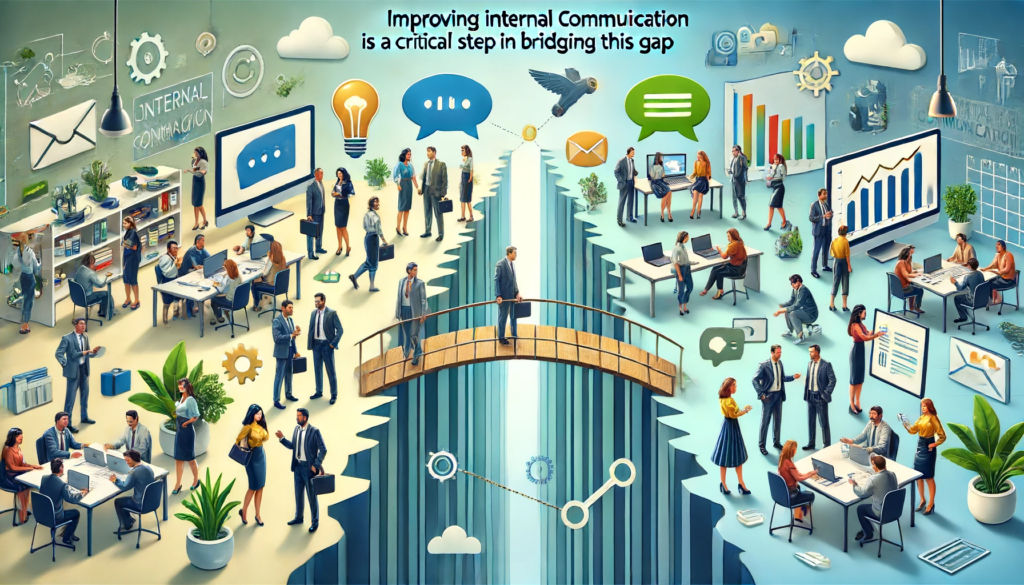Imagine a workplace where everyone is on the same page, productivity is through the roof, and team spirit is high. That’s the magic of effective internal communication! It’s not just about passing messages; it’s about creating a vibrant culture of engagement and alignment with your company’s vision. This open dialogue boosts collaboration, strengthens your organizational culture, and enhances overall performance.
Internal communication is the lifeblood that connects all parts of your organization, driving it toward success. And that’s just scratching the surface! Dive in to discover how it can skyrocket morale, eliminate misunderstandings, and build a harmonious work environment. Ready to transform your workplace? Let’s get started!
Introduction to Internal Communication
So, what’s all the buzz around internal communication?
In simple terms, it’s the exchange of information within your organization, a crucial cog in the corporate wheel.
It’s more than just emails and meetings – it’s about fostering a culture of transparency, engagement, and productivity.
Definition of Internal Communication
Diving into the world of business, understanding internal communication is crucial as it encompasses all exchanges of information within an organization through various methods like emails, meetings, and instant messaging. This definition of internal communication refers to the active transfer of information and ideas among individuals or groups within your business.

The types of internal communication can vary greatly, but they typically fall into several categories. Top-down communication, for instance, flows from the upper echelons of your company down to your employees, often in the form of directives or important news. Horizontal communication, on the other hand, happens among peers or colleagues, facilitating collaboration and problem-solving.
Different communication channels serve different purposes within your organization. Emails, for example, are ideal for formal communication or when you need a paper trail. Meetings are great for brainstorming sessions or discussions, while instant messaging is perfect for quick, informal chats or updates.
Understanding the importance of internal communication and its different types and methods helps you select the right channels for each situation and audience, ensuring effective and efficient communication within your organization.
Importance of Internal Communication
Without a doubt, internal communication is the lifeblood of any organization, playing a critical role in fostering employee engagement, facilitating smooth information flow, and aligning everyone with the company’s mission and vision. It’s the mainframe that connects different parts of an organization, promoting a culture of transparency and collaboration.

The importance of internal communication lies in its ability to enhance employee morale and productivity. By ensuring that every team member is on the same page, it helps in boosting organizational success.
An effective internal communication strategy uses various communication channels to disseminate information. Email, intranet, staff meetings, and corporate communication tools are all part of the mix.
| Effects on Employee Engagement | Effects on Organizational Alignment |
|---|---|
| Boosts Morale | Promotes Vision and Goals |
| Increases Productivity | Enhances Collaboration |
| Improves Retention | Strengthens Culture |
Implementing a robust internal communication strategy will not only facilitate information flow but also contribute to better relationships among employees. By paying attention to employee communication, you’re bound to create a harmonious work environment where everyone feels valued and heard.
Benefits of Effective Internal Communication
Now, let’s consider the benefits of effective internal communication.
Think about how clear, consistent messaging can boost employee engagement and productivity.
Also, consider the role strong communication plays in shaping your organization’s culture.
Enhances Employee Engagement
When your organization prioritizes clear and consistent internal communication, it significantly enhances employee engagement by making team members feel valued and well-informed. This process isn’t simply about delivering information; it’s about fostering a culture of transparency and inclusivity.

Clear communication is a cornerstone of strong employee morale. When you keep your team in the loop, they feel like an integral part of the organization, not just a cog in the machine. This boosts engagement and makes employees more likely to contribute their best efforts.
Consistent communication, on the other hand, ensures that everyone is on the same page. It eliminates confusion, reduces misunderstandings, and allows for seamless collaboration. This, in turn, enhances productivity, as team members can focus their energies on their tasks rather than trying to figure out what’s going on.
Improves Productivity and Performance
Through effective internal communication, you can significantly reduce misunderstandings and streamline workflows, enhancing the overall productivity and performance within your organization. When everyone is on the same page, tasks are completed more efficiently, reducing the time and resources wasted on miscommunication. Effective communication eliminates confusion, ensuring that every team member knows their role and responsibilities clearly.

One of the main communication benefits is its ability to enhance overall productivity. Internal communication tools and strategies can provide a platform for open dialogue, idea exchange, and problem-solving, which directly improves performance. It ensures that important information is disseminated correctly, speeding up decision-making processes and work operations.
Effective internal communication also has a significant communication impact on workplace efficiency. It can eliminate bottlenecks, reduce duplication of efforts, and ensure that everyone is working towards the same goals. This ultimately leads to improved organization productivity, as teams function more cohesively and effectively.
Builds a Strong Organizational Culture
Effective internal communication plays a pivotal role in shaping and fortifying a robust organizational culture. It’s more than just sharing information; it’s about creating a shared understanding, a sense of unity, and a common voice.

A well-structured internal communication plan can help you foster a culture that aligns with your brand’s values and mission.
Here are some ways how:
- By establishing clear internal communication, you ensure everyone is on the same page, reducing misunderstandings and fostering a sense of unity.
- Effective two-way communication encourages feedback and dialogue, making your employees feel heard and valued.
- Successful internal communication helps to reinforce your internal brand voice, ensuring consistency in your organization’s messaging.
- Internal communication tools, such as intranet, company-wide emails, and messaging apps, can streamline communication, making information sharing more efficient.
The role of internal communication in building a strong organizational culture can’t be overstated. It’s not just about conveying information; it’s about building relationships, encouraging collaboration, and shaping a culture.
With the right internal communication strategies, you can build an effective internal communication system that benefits your organization in many ways.
Key Components of Internal Communication
Let’s take a look at the key components of internal communication.
This includes:
- Top-down communication
- Bottom-up communication
- Horizontal communication
Understanding these elements is crucial in crafting an effective internal communication strategy.
Top-Down Communication
As an essential component of internal communication, top-down communication allows management to disseminate vital information to employees efficiently. It plays a pivotal role in your internal communication efforts and is immensely important in the workplace.
Done correctly, it fosters open communication, aligns employees with business goals, and streamlines operations. It’s the foundation of a successful internal communication strategy, ensuring that everyone is on the same page.
Internal communication is the function that bridges the gap between management and employees, nurturing a culture of transparency and trust. It primarily involves communication between employees and the management team, facilitated through various internal communication channels.
Here’s why top-down communication is valuable:
- It clarifies expectations and responsibilities, reducing confusion and boosting productivity.
- It shares important updates, ensuring everyone is informed about company developments.
- It promotes a unified vision, aligning everyone’s efforts towards common business goals.
- It strengthens the company culture, fostering a sense of belonging and commitment among employees.
Bottom-Up Communication
While top-down communication aligns your team with company objectives, bottom-up communication, on the other hand, offers an avenue for employees to voice their ideas, concerns, and feedback to management, becoming a vital component in the internal communication mix.

As an internal communicator, it’s essential to facilitate two-way communication channels that encourage feedback from employees.
Bottom-up communication is more than just an internal communication strategy; it’s a tool for tackling communication challenges and driving your organization’s improvement. By providing an open platform for team members to express their thoughts, you’re fostering a culture of transparency and respect.
Peer-to-peer communication is also an essential facet of bottom-up communication, allowing employees to exchange ideas and share knowledge. Different communication methods can be used to promote this, such as team meetings, suggestion boxes, or digital platforms designed for collaborative discussions.
Horizontal Communication
In the realm of internal communication, horizontal communication acts as the lifeblood of collaboration and teamwork, allowing peers to exchange ideas, knowledge, and insights. The role of horizontal communication is pivotal in creating a conducive work environment where information flows freely among peers, fostering a sense of unity and shared purpose.

It’s essential to understand the benefits of horizontal communication in organizations. It not only enhances collaboration and teamwork but also smooths out process kinks and promotes innovation. The importance of horizontal communication can’t be overstated.
To improve horizontal communication, consider implementing these strategies:
- Adopt horizontal communication tools that facilitate peer-to-peer communication.
- Train your team on effective horizontal communication techniques.
- Encourage a culture of open, honest communication.
- Regularly review and improve your horizontal communication strategies.
Challenges in Internal Communication
Despite the immense benefits of effective internal communication, there are common challenges your organization might face.
One significant hurdle is the potential misalignment between leaders and employees.
Let’s explore how to overcome these communication barriers and improve the flow of information within your team.
Misalignment Between Leaders and Employees
You might be surprised to learn that a significant disconnect often exists between leaders and employees when it comes to the effectiveness and relevance of internal communication. This misalignment can negatively impact the importance of internal communication, hindering employee engagement and leadership communication.
When leaders overlook the significance of communication alignment, the relevance of messages can be lost, causing a communication disconnect between management and employees. This can result in a lack of understanding of company goals and values, reducing overall communication effectiveness.

Here are a few challenges that arise due to this misalignment:
- Misunderstanding of management communication by employees, leading to confusion and frustration.
- Lack of leadership in reinforcing the significance of employee communication, resulting in decreased engagement and productivity.
- A disconnect in understanding the relevance of communicated messages, leading to misinterpretation and misinformation.
- Misalignment in leadership communication, causing inconsistency and uncertainty.
Improving internal communication is a critical step in bridging this gap. By addressing these issues, you can foster a more open, transparent, and effective communication culture in your organization, ultimately boosting alignment between leaders and employees.
Overcoming Communication Barriers
Having understood the problems arising from misalignment between leaders and employees, let’s now tackle some practical ways to overcome common communication barriers in your organization.

Firstly, unclear messaging can be a major roadblock. To combat this, use plain language and prioritize clarity over jargon. Make sure your message is easily digestible to all employees, regardless of their role or level of expertise.
Another internal communication barrier is lack of engagement. To boost involvement, make your communication interactive. Encourage feedback, questions, and open discussions. This not only engages employees, but also fosters a culture of openness and transparency.
Inadequate feedback mechanisms can also hinder effective internal communication. Ensure you’re providing channels for employees to express their thoughts, ideas, and concerns. Regular surveys, suggestion boxes, and open-door policies are great solutions to this communication barrier.
Strategies for Effective Internal Communication
Now, let’s turn to strategies for effective internal communication.
First, you’ll need a robust communication plan, followed by the smart utilization of technology and tools.
Lastly, it’s crucial to measure the effectiveness of your communication efforts for continuous improvement.
Developing a Communication Plan

To develop a robust internal communication plan, start by aligning it with your organization’s goals and addressing the needs of your employees. This comprehensive approach ensures that your plan supports your organizational objectives while meeting the communication needs of your team. The importance of this alignment can’t be overstated, as it not only keeps everyone on the same page but also helps drive your business forward.
In developing your plan, consider the following steps:
- Identify the key messages or important news to be communicated and ensure it aligns with the organization’s goals.
- Choose effective communication channels that your employees are comfortable using.
- Regularly review and update the plan to reflect the changing needs of your organization and employees.
- Finally, seek feedback from your team to ensure the plan remains relevant and effective.
Utilizing Technology and Tools
As you refine your communication plan, embracing technology and tools can significantly boost the effectiveness of your internal communications. Technology in communication plays a crucial role in streamlining the flow of information, thereby enhancing communication in your organization.

From communication systems like email and instant messaging to innovative communication platforms like social media, technology provides an array of options to optimize your internal communication.
Consider employing centralized platforms, where all communication channels converge, providing an organized, efficient hub for information dissemination. These platforms can integrate various communication tools, ensuring consistency and coherence in your messages.
Video communication is another powerful tool in the modern workplace. It brings a human touch to digital interactions, fostering better understanding and engagement. From team meetings to training sessions, video can enhance the connectivity and collaboration among your teams.
Social media isn’t just for external communication anymore. Internal social media platforms can stimulate informal chats, promote knowledge sharing, and build stronger team relationships.
Measuring Communication Effectiveness
Understanding how effective your internal communication strategies are is crucial, and that’s where measuring communication effectiveness comes into play. To evaluate success, you need to adopt specific measurement methods and metrics.
One of the key metrics to consider is employee feedback. Feedback mechanisms such as surveys and focus groups provide invaluable insights into how well your communication strategies are being received and how they can be improved.

Another important metric is engagement levels. High engagement levels indicate that your communication efforts are resonating with employees, while low levels might suggest the need for a strategic review.
The following are a few ways to measure communication effectiveness:
- Analyzing engagement levels through metrics like email open rates, meeting attendance, and participation in discussions.
- Using feedback mechanisms to receive direct employee feedback on various communication strategies.
- Conducting regular communication evaluation sessions to identify areas of strength and areas needing improvement.
- Reviewing communication metrics regularly to track progress and adjust strategies as needed.


